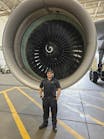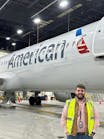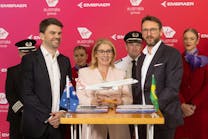Embraer’s Malaysia Report Foresees Potential for Over 100 New Routes Within Malaysia and the Region
In conjunction with its participation of the Selangor Aviation Show, Embraer released its Malaysia report which shows how regional jets can enable the opening of over 100 new routes within Malaysia and the region.
“As travel demand recovers, we see unique opportunities for Malaysia to enhance its connectivity domestically and regionally. However, it must also make business sense for airlines,” said Raul Villaron, Asia Pacific vice president for Embraer Commercial Aviation. “Airlines are facing tough challenges such as higher fuel prices and an increasingly competitive operating environment, making it imperative to right-size aircraft capacity to passengers.”
Embraer also identifies the need for 150 new aircraft under 150 seats over the next 20 years in Malaysia. Regional aircraft of this size will complement larger aircraft prevalent in the country and enhance the viability of establishing new routes or increasing the frequency of existing routes. This includes the boosting of direct connectivity within Peninsula Malaysia, as well as connectivity between cities in Peninsula Malaysia to Sabah and Sarawak.
In the previous edition of the Selangor Aviation Show, Embraer displayed its E195-E2 commercial jet, demonstrating how the aircraft’s low operating costs, superior performance and low fuel and noise emissions can add value to Malaysia’s aviation landscape. The E195-E2 is the world’s most efficient and sustainable single-aisle aircraft and seats up to 146 passengers.
Regional jets like Embraer’s E-Jets E2 family of aircraft (the E190-E2 and E195-E2) possess ideal attributes that enable airlines to grow their route network, and to drive passenger traffic to its hubs. The E2 has up to 25% reduced trip cost than a new generation narrow-body aircraft commonly seen in Malaysia while maintaining seat cost parity, and this will improve the competitiveness of an airline.
Embraer’s E-Jets have been a prominent feature at major air hubs across the world. Airlines such as KLM, Lufthansa, British Airways, Japan Airlines and all major US carriers have deployed the E-Jets to grow its routes and to feed traffic to its air hubs. Regional airlines across the globe, including Bamboo Airways in Vietnam also operate E-Jets to establish routes to and from secondary and tertiary cities.
Sustainability
The E2 is the most efficient single aisle aircraft flying today, saving up to 25% carbon dioxide emissions compared to previous generation aircraft.
In early July, Embraer and Pratt & Whitney successfully tested a E195-E2 aircraft on 100% sustainable aviation fuel (SAF). With 100% SAF, the 25% reduction in emissions can be increased up to an impressive 85%.
By 2030, the E-Jets E2 family of commercial jets will be certified to fly with 100% SAF.
Embraer aims to be carbon neutral by 2040 and achieve carbon neutral growth from 2022. Its sustainability journey began almost 20 years ago when the company was one of the first aircraft manufacturer to receive the ISO 14001 certification in environmental management of its production and design processes. In 2004, Embraer pioneered the design of the world’s first production airplane powered by bio-fuel, the “Ipanema”.
Embraer is involved in many new technology projects. The low emissions eVTOL (electric vertical take-off and landing vehicle) developed by Embraer’s spin-off company Eve, is poised to enter into service by 2026, offering people more options to determine the way they travel, especially the ‘last mile of the journey’ – getting from the airport to their home or vice versa.
In November 2021, Embraer unveiled the Energia family which comprises four concept aircraft of varying sizes that incorporate different propulsion technologies – hybrid-electric, electric, hydrogen fuel cell and dual fuel gas turbine.



